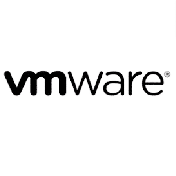Seminarinhalt
After you successfully complete this course, expect to be able to:
- Install HPCM
- Add servers to the cluster
- Manage data networks
- Provision nodes
- Create and modify images and software repositories
- Use image version control
- Automate post installation tasks
- Configure shared filesystem, user accounts, applications and updates
- Troubleshoot cluster services
- Review cluster security features
Programm
- Describe HPCM features
- Define operating system slots
- Build cluster from ground up
- Provision node with GUI
- Provision node with command line
- Add nodes to the cluster
- Explore auto installation tools
Discover
- Discover nodes
- Interpret cluster configuration files
- Review cluster services
Data Networks
- Describe technologies
- Describe InfiniBand configuration
- Describe Intel Omni-Path configuration
- Describe software components
- Use diagnostic commands
Manage Images
- Manage software repositories
- List software repositories
- Add software repositories
- Remove software repositories
- Create repository groups
- Customize an image by using RPM lists
- Create a compute node image
- Create an ICE-compute node image
- Manage image version control
- Check in an image into version control
- Compare differences between two versions of an image
- List the versions of an image
- Deploy a specific version of an image
- Push an ICE-compute image to a rack
- Use parallel tools and inbuilt functionality to check differences between nodes
- Enable hyperthreading
- Disable hyperthreading
- Configure array services
- Install batch scheduler server on a compute node
- Install batch scheduler client on a compute node and in ICE compute node
- Configure HPCM connectors to job schedulers
- Capture an image from a node (golden)
- Add RPMs to, remove RPMs from, and version control compute images
- Add and remove RPMs from running compute nodes
- Clone an ICE-compute image
- Clean up old images on the lead node
- Add RPMs to ICE compute image Compare when and when not to use tmpfs root
- Determine which nodes use tmpfs root
- Configure nodes to use tmpfs root
- List tmpfs quota difference (rack leader quotas do not apply when ICE-compute nodes are in tmpfs)
- Set tmpfs mode
- Set disk mode
- Show which mode a node has booted with
- Show which mode a node is scheduled to boot into
- Perform a clone operating system slot operation
Automate Post Installation Tasks
- Review conf.d scripts
- Exclude a conf.d script
- Use pre_reconf.sh
- Use reconfig.sh
- Develop post install and per-host customization scripts
Configure Shared Filesystem, User Accounts, Applications, and Updates
- NFS Export a filesystem on a compute node
- Mount an NFS filesystem and create a user on an ICE compute node
- Manage user accounts
- Synchronize UIDs and GIDs, LDAP, etc.
- Run an application on compute and ICE compute nodes
- Display BIOS settings
- Upgrade firmware
- Update kernel
- Update distribution
- Update HPCM
Troubleshoot Cluster
- Backup cluster configuration
- Backup managed network switch configuration
- Use the central log repository
- Investigate log files
- Gather system information
- Interrogate iLOs, BMCs
- Confirm resources
- Create pdsh groups
- Investigate bond devices
- Inspect VLAN devices
- Capture a node crash dump
- Transfer an image from another slot or another system and confirm that the image can be used.
- Inject faults
Review Cluster Security
- Describe system administrator configurable security tasks
- Describe what makes cluster security different from standalone security (how would change X break the cluster)
- List ports used for each node role and for which interfaces
- List components with passwords
– Flat compute nodes
– Rack leader nodes
– ICE compute nodes
– BMCs
– CMCs
– Ethernet network switches
– InfiniBand and Omni-Path switches
– IB/OPA switch BMCs
– Storage controllers
- List components that can have passwords applied
Zielgruppen
- Attend this class if you need to learn to install, configure and administer clusters managed with the HPE Performance Cluster Manager (HPCM)
- Experienced Linux system administrators
Vorkenntnisse
- H8PE8S: HPE Performance Cluster Management Foundations
- The following Linux system administration skills are prerequisites for this course:
- Edit text with the vi editor
- Recognize regular expression syntax
- Access documentation with man and info file viewers
- Monitor, manage and maintain log files
- Enter common commands at the bash command line; create and interpret basic bash shell scripts
- Install and configure standard software components, services and security features
- Configure basic communication protocols
- Create and modify crontabs
- Monitor resources usage; be familiar with basic monitoring tools
- Install and configure a Linux distribution on a server
- Create, modify, and delete user accounts and group accounts
- Partition disks, manage filesystems and logical volumes
- Use RPM package management
- Install and use virtualized systems
- Understand basic hardware and hardware troubleshooting



